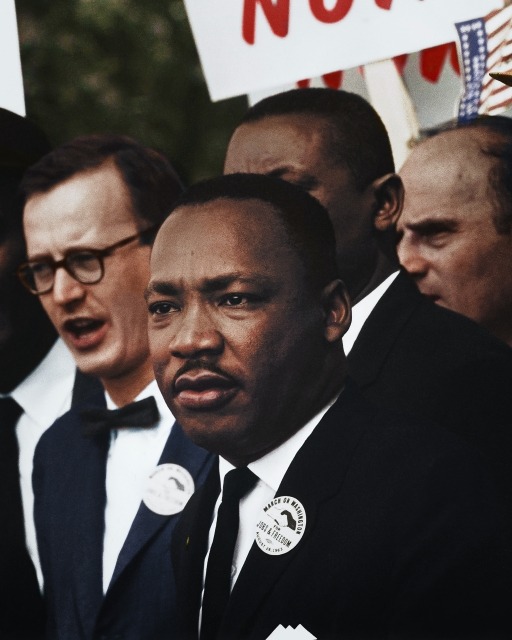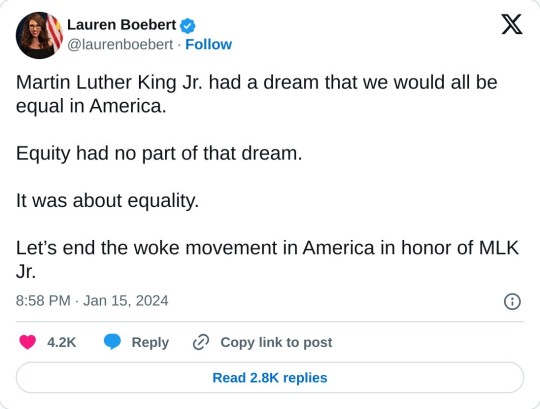#yazdiha
Photo

. گَردی که خیزد از قَدَم رهروان عشق با سرمه ی سیاهی منزل برابرست #صائب_تبریزی هومان، سرای آرامش 💛 #سفر #tourism #گردشگری #iran #طبیعت #تور #سفر #گردشگری #هتل #مسافرت #mustseeyazd #iran #yazdi #yazdiha #yazd #art #design #stair #decoration #architect #بلاگر #بلاگر_ایرانی #فشن #مد #بلاگر_استايل (at Hooman hotel) https://www.instagram.com/p/CgwuwwBI7Ms/?igshid=NGJjMDIxMWI=
#صائب_تبریزی#سفر#tourism#گردشگری#iran#طبیعت#تور#هتل#مسافرت#mustseeyazd#yazdi#yazdiha#yazd#art#design#stair#decoration#architect#بلاگر#بلاگر_ایرانی#فشن#مد#بلاگر_استايل
0 notes
Text

“This beautifully written, theoretically sophisticated book analyzes forty years of public contestation over the memory of civil rights. Yazdiha shows how conservatives have sanitized King to advance their political agenda on race, and how progressives have struggled to maintain a realistic depiction of him in their fight for social justice. An instant classic.”
#uwlibraries#history books#american history#history and politics#history and memory#civil rights#african american history
25 notes
·
View notes
Text

We invite you to enjoy this sample chapter of The Struggle for the People’s King: How Politics Transforms the Memory of the Civil Rights Movement by Hajar Yazdiha.
Discover how the misuses of Martin Luther King’s legacy divide us and undermine democracy.
81 notes
·
View notes
Text
Quando dei "semplici" ragazzi, a rischio della propria vita, hanno più palle di tutta la classe politica mondiale. ( Nel totale silenzio della sinistra italiana, specialmente di certi " personaggi " politici che ostentavano e promuovevano l'uso del velo (hijab) asserendo pure ad una loro libertà nel decidere di indossarlo.
Laggiù in Iran le donne sono uccise per poter avere la libertà di non portarlo per legge islamica, uccise anche per le manifestazioni, per poter avere diritti diciamo basici come studiare, ribadisco, nel silenzio scandaloso dei media e delle classi politiche.

Sara Khadim al-Sharia, campionessa di scacchi iraniana ha preso parte ai campionati del Mondo in Kazakistan senza indossare l'hijab obbligatorio.
Foto della giornalista Elham Yazdiha di Iran International.
4 notes
·
View notes
Text
This is some 1984 doublespeak.

It got me riled up and off looking for MLK texts, but then I realized. This was the woman who struggled to pass the GED. She's not a deep reader or thinker or intellectual to have read entire MLK texts or deeply thought about him to be in a position to describe his legacy in detail.
It's been intentional since Reagan signed into law MLK Day for the GOP to use the day to cherry pick his quotes for advocating for equality not equity.

“If democracy is to have breadth of meaning, it is necessary to adjust this inequity. It is not only moral, but it is also intelligent. We are wasting and degrading human life by clinging to archaic thinking.” (“Where Do We Go from Here?” 1967)
It’s all right to tell a man to lift himself by his own bootstraps, but it is cruel jest to say to a bootless man that he ought to lift himself by his own bootstraps.
Martin Luther King, Jr.
From my own recollection, MLK spoke much about ending inequality and injustice. The injustice was systemic racism preventing people from achieving equality.
These days, King’s words are being twisted with a straight face by arch-conservatives seeking to unravel the very progressive measures King fought so hard to secure before his assassination in 1968. In her book The Struggle for the People’s King, Yazdiha traces this trend to the institutionalization of Martin Luther King Jr Day under Ronald Reagan. “He was opposed to civil rights, hated Dr King and blamed him for his own death,” she says. When Reagan realized he couldn’t stop Congress from passing the King holiday in 1983, he turned the political defeat into a legacy-making opportunity. “He decides that if he can link his legacy to King, he first of all can ward off claims that he’s racist, and second – and this is really critical – he makes sure that we remember a particular version of Dr King that is colorblind, a vision of American exceptionalism, of states’ rights, of the individual capacity to pull yourself up from your bootstraps,” Yazdiha says.
0 notes
Text
How the distortion of Rev. Dr. Martin Luther King Jr.‘s words enables more, not less, racial division within American society | Chicago Defender
0 notes
Photo

A windcatcher is a traditional architectural element used to create natural ventilation and passive cooling in buildings. 📷Sadegh Miri #letstraveliran #iran #letstravel #travel #tour #tourism #tourist #tourleader #traveling #instagram #instagramers #photography #photo #naturephotography #badgir #windcatcher #yazdiha #shiraz1400 #persian #persianmusic #persian #persianhome #traveltheworld #abarkuh (at Abarkuh, Yazd, Iran) https://www.instagram.com/p/CQDZtM_nA-r/?utm_medium=tumblr
#letstraveliran#iran#letstravel#travel#tour#tourism#tourist#tourleader#traveling#instagram#instagramers#photography#photo#naturephotography#badgir#windcatcher#yazdiha#shiraz1400#persian#persianmusic#persianhome#traveltheworld#abarkuh
0 notes
Photo

اینجا یزد ، پشت بام خانه هنر :) ... #معمارانه_یزد #جاذبه_گردشگری #یزد #یزدگردی #yazdiha #tourism #yazdgardy #iran #yazdarthouse عكاس : @alirezatajvidi89 (at Yazd, Iran) https://www.instagram.com/p/Br-kdzZjM9r/?utm_source=ig_tumblr_share&igshid=qby9k64ssfva
0 notes
Photo

#پست_موقت⏰ 🔸لطفا پجشون رو كامنت كنيد فقط🔸 #عكس #عكاسي #عكس_هنري #عكسها #عكس_زيبا #عكس_برتر #عكس_خاص #عكس_عاشقانه #عكاسان #عكاس_باشي #عكاسي_تبليغاتي_صنعتي #عكاسي_حرفه #عكاسي_يزد#يزد #يزديها #يزدجهاني #يزد_زيبا #عكس_مدلينگ #photography#photographer #photo #photoshoot #photomodel #photograph #photographers #photographie #photogram #yazd #yazdiha #yazdgardy #yazdpix #pic #picture (at Yazd, Iran)
#يزد#picture#عكس_عاشقانه#photograph#photo#يزدجهاني#عكس#photoshoot#yazd#photogram#عكاسي_تبليغاتي_صنعتي#yazdiha#عكاسان#پست_موقت⏰#عكس_هنري#photomodel#عكاس_باشي#photographie#عكس_مدلينگ#photographers#عكسها#عكس_زيبا#pic#عكاسي_يزد#photographer#yazdpix#عكاسي_حرفه#photography#عكس_خاص#يزديها
0 notes
Text
An ethnographic and Semiotic Investigation of Hybrid Bollywood Song and Dance Numbers
Bollywood has been making movies since the 1930s. Although the numbers are debated, today Bollywood is either the second or third most prolific film industry in the world. The term Bollywood refers to the Hindi language film industry based in Mumbai (formerly Bombay), India. This media across cultures project will focus on the song and dance numbers of Bollywood films with a methodological lens informed by both semiotics and ethnography. Ethnography is the scientific investigation of people and their concomitant cultures. Ethnography endeavours to understand how people live their lives and how they construct shared cultural meaning. In addition, ethnography locates spaces where shared cultural understandings are negotiated and formulated. Semiotics studies how meaning is created and communicated with a particular focus on signs and symbols, which is extremely important when investigating the construction of shared cultural meaning. Semiotics covers a number of fields; however, in this investigation, semiotics will be utilized in the analysis of a cultural product: the song and dance numbers of Bollywood films. Central to this investigation is the concept of hybridity, which can be defined as the commingling of cultural elements from different cultures—the colonizer and the colonized— resulting in the construction of new cultural objects derived from the integration of these elements (Yazdiah, 31). Hybridity manifests in a number of different ways when the song and dance number of Bollywood films are considered. When film theory is considered, Bollywood films emerge as a hybrid between first world and third word cinema, as they often contain both Western and uniquely Indian cinematic elements on all levels. As Tyrell argues, “Bollywood films are not solely politically motivated, nor are they entirely devoid of nationalist/anti-colonialist content. They are once ‘escapist’ and ideologically loaded” (261). As a result, Bollywood films can paradoxically be seen as both defending Indian values against Western intrusion, and “as a dangerous courier of Western values to the Indian audience” (261). It is a hybridity that is characterized by constant negotiation between India and the West. An important component of this hybridity is the merging of the West and East in unique imagined spaces, which also function as meaningful and identity forming third spaces. According to Bhabha, third spaces are where mutually depended colonizers and the colonized construct new cultural objects making us increasingly “aware of the construction of culture and the invention of tradition” (247). When the song and dance numbers of many Bollywood films are viewed through an analytical lens that is informed both by ethnography and semiotics, it can be seen that they not only act as third spaces for power dynamic negotiations between India and the West, but also function as third spaces where the ‘imagined communities’ of the Indian diaspora define themselves vis a vis both their adopted homelands and their national center, India. This will be emphasized in this media analysis by only considering the song and dance numbers from Bollywood films that are set both in India and the West.
Works Cited
Bhabha, H. (1994). The Location of Culture. London: Routledge.
Tyrrell, H. (1999). “Hollywood versus Bollywood: Battle of the Dream Factories.” In Tracy Skelton and Tim Allen (eds.), Culture and Global Change. New York: Routledge, 260-66, 272-273.
Yazdiha, H. (2010). “Conceptualizing Hybridity: Deconstructing Boundaries through the Hybrid.” Formations, 1(1), 31-38.
0 notes
Photo

. هر کجا برگی هست شور من میشکفد مثل یک گلدان میدهم گوش بہ موسیقی روییدن. #سهراب_سپهرے هومان، سرای آرامش 💛 #عکس #photo #عکاسی_کودک #عکاسی #photography #رزرو #سفر #گردشگری #هتلداری #مسافرت #هتل #هتلی #گردشگری #تور #سفر #هتل #مسافرت #سفريات #تصويري #سفر #yazdiha #yazd #yazdi #iran #mustseeyazd (at Hooman hotel) https://www.instagram.com/p/CgPWk5OoP2t/?igshid=NGJjMDIxMWI=
#سهراب_سپهرے#عکس#photo#عکاسی_کودک#عکاسی#photography#رزرو#سفر#گردشگری#هتلداری#مسافرت#هتل#هتلی#تور#سفريات#تصويري#yazdiha#yazd#yazdi#iran#mustseeyazd
0 notes
Text
This month’s Office Hours comes with an exciting announcement: We are welcoming three new editors to the Princeton Studies in Cultural Sociology! Clayton Childress, Angèle Christin, and Iddo Tavory join current editors Paul DiMaggio, Michèle Lamont, and Viviana A. Zelizer. We are delighted to add their expertise to the series, which aims to publish works by the most promising and prominent scholars in cultural sociology. Get to know these new editors a bit better below as they share some terrific book recommendations and thoughtful career advice.
We hope to see you all at ASA in Philadelphia—please do stop by the Princeton University Press booth (#409)!
—Meagan Levinson, Executive Editor
What book are you reading now?
AC: Like many people, I first got into academia because I loved reading books. To keep this love going, I created a Feminist STS Book Club at Stanford with graduate students and postdocs, where we each nominate books—scholarly books as well as fiction—and discuss them together. The two books we read most recently were a blast.
The first one was Timothy Mitchell’s The Rule of Experts: Egypt, Techno-Politics, Modernity (University of California Press), which starts with this unforgettable sentence describing the arrival of malarial mosquitos during World War II: “In the summer of 1942 two forces invaded Egypt, and each provoked a decisive battle. Only one of the two was human, so only that one is remembered, although the casualties in the other battle were greater.” I mean… does academic writing get any better than this?
The second was Michael Kimmel’s Manhood in America: A Cultural History (Oxford University Press), a classic in gender studies. Kimmel introduces the concept of “hegemonic masculinity,” and has some pretty amazing pictures that kept us going for a long time (I won’t say more but encourage everybody to take a look). This one was particularly relevant for my research, since part of my current book project on influencers focuses on the case of “dad influencers” and how they articulate masculinity on Instagram, YouTube, and TikTok.
CC: Right now I’m reading Hajar Yazdiha’s The Struggle for the People’s King (Princeton University Press), which I got a couple days before I wrote this, and which I’m loving so far. Other books I’ve recently read and admired are Derron Wallace’s The Culture Trap (Oxford University Press), Larissa Buchholz’s The Global Rules of Art (Princeton University Press), and Frank Dobbin and Alexanda Kalev’s Getting to Diversity (Harvard University Press). Next on my list is Kusha Sefat’s Revolution of Things (Princeton University Press). The two forthcoming books I’m most excited about are not sociology; Jesse David Fox’s Comedy Book (FSG) and Kliph Nesteroff’s Outrageous (Abrams).
IT: One of the things I realized when I got a job is that, suddenly, I had to trick myself into reading books. Academic life is full of so many tasks with actual deadlines, that reading a book becomes something you have to make a real effort to get to. I trick myself into reading books by putting myself on award committees, sitting on editorial boards (!) and running a theory reading-group with students and colleagues at my department.
Two books that I have been spending time with over the past weeks are Karen Cerulo and Janet Ruane’s Dreams of a Lifetime (Princeton University Press), and Annie Ernaux’s Shame (Seven Stories Press). The first is a wonderful sociological book that shows the patterns of fantasy that America Dreams follow; The second is a fiction book in which seemingly very little happens. The author spends the entire book trying to understand the background conditions that led to her experiencing a particular childhood trauma described on the first couple of pages. Both sociological books, though in different ways…
What book has had the most impact on your career?
AC: That’s a hard one. I was first trained in France, where I came of age with the holy trifecta of Pierre Bourdieu-Luc Boltanski-Bruno Latour, so it’s been hard to break away from this training, and in all honesty I should probably cite a book from each of them.
That said, if I were to choose a book that recently made me reconsider everything I thought and how I could write, I would pick Donna Haraway’s “A Cyborg Manifesto,” first published in 1985 as an essay in the Socialist Review, later published as part of Simians, Cyborgs, and Women: The Reinvention of Nature (Routledge). It changed everything I thought I knew about technology, feminism, and embodiment. More personally, it transformed how I thought of myself in relation to technological and medical artefacts. It’s such an energetic, powerful, free kind of text—it’s creative in a way that encourages everyone to play with disciplinary norms.
CC: Josh Gamson’s Freaks Talk Back (Chicago University Press) is why I wanted to become a sociologist. It’s empirically rich, important but not self-important, and contrarian in a way that I think much of good sociology should be. It has a home base in culture while also integrating across subfields (movements, sexualities) in such an exciting way. And it’s unabashedly a fun read. I love it.
IT: Perhaps the book that made the most impact on me was G. H. Mead’s Mind Self and Society (University of Chicago). I was a Master’s student in Tel Aviv University, and some friends and I started a theory “book club.” We would meet at my place to read 5-10 pages of the book, slowly working through the ideas over months, trying to think what it means for a self to emerge socially, and what it means to focus on action. A lot of my interactionist and pragmatist leanings were cemented there, in the back and forth of these conversation
What is the best career advice you ever received?
AC: My postdoc mentor danah boyd once said in passing, “you need to find out what recharges your battery.” I don’t think she was giving career advice, but this sentence has stayed with me ever since. Academic careers are long and arduous. The job is wonderful but exhausting and relentless, so after a while, for me the question became: how do you keep on going? danah’s answer was another question: what brings you joy? Is it immersing yourself in books and articles and learning about a topic you know nothing about? Is it writing first drafts and figuring out what you’re trying to say about something? Is it doing in-depth fieldwork? Is it fostering intellectual community and see how other people think about hard questions? Is it curling up on a sofa with hot tea and reading romance novels? (of course, it can be all the above). When I feel depleted and exhausted, I try to go back to what brings me joy, I seek to protect it and put clear boundaries around it. It doesn’t always work, but I like to think that I’m getting better at it!
CC: When I was a graduate student my advisor, John Mohr, warned me that he thought a lot of things could (and likely would) go wrong with my dissertation, but not to worry, because none of them would prevent me from ultimately having a dissertation. It was a warning and a reassurance at the same time, which is the package that those types of warnings should always come in. As John predicted, many things did go wrong in my dissertation. The gift of that conversation was John was giving me permission to be comfortable with my reach exceeding my grasp, and to take risks, and to try stuff out.
IT: Not quite advice, but a form of training… I was a journalist before I decided to get into academia. I used to work in the foreign desk editor at Ha’aretz, an Israeli newspaper. Every day I would come at 4pm and get my pages and some guidance from my chief editor, and every night, at around 12am, give or take, the pages I received would be full, double-checked and copy-edited. There was something reassuring about knowing that, whatever happens, the pages will be filled in the 8 hours between my arrival and going home. Approaching academic work in this way has been incredibly helpful. Writing is not a matter of inspiration. Inspiration may hit in the act, but sitting and writing—filling the page—is a form of labor. I think it saved me from a lot of angst both in graduate school, and later on in my career.
Clayton Childress is assistant professor of sociology at the University of Toronto.
Angèle Christin is assistant professor of communication and, by courtesy, of sociology at Stanford University. Website www.angelechristin.com Twitter @AngeleChristin
Iddo Tavory is associate professor of sociology at New York University.
1 note
·
View note